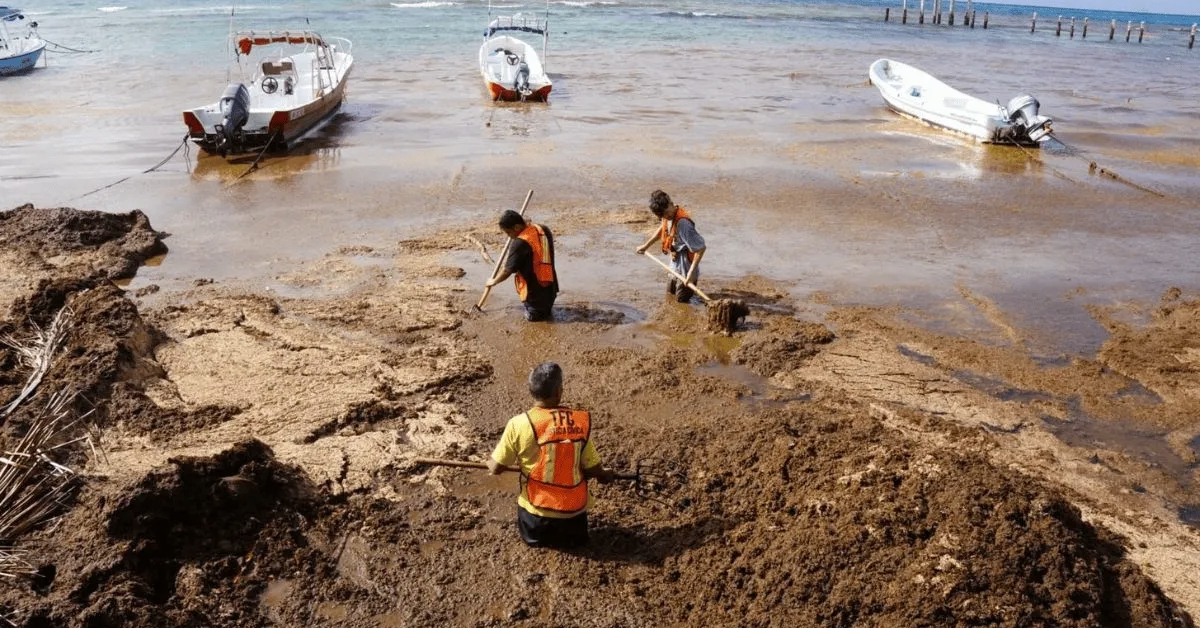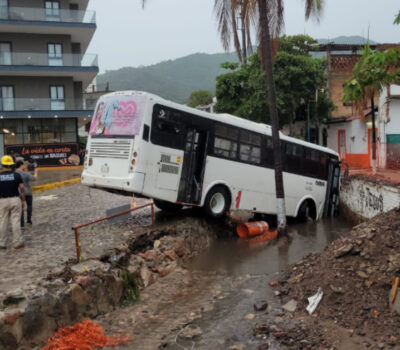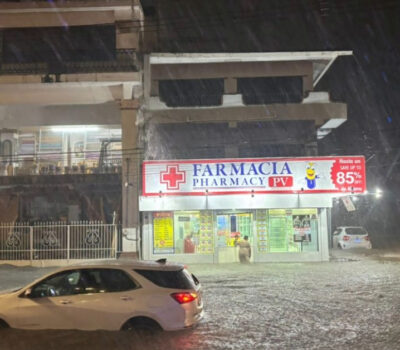Cancún steps up sargassum removal efforts with 40 tonnes cleared from beaches in a single day, signaling a more aggressive approach to protect tourism.
City officials in Cancún ramped up their beach cleaning efforts this week, clearing 40 tonnes of sargassum from Playa Chac Mool in just one day, one of the largest single-day removals this year.
The push is part of a more aggressive local strategy to keep beaches clean as sargassum continues to wash ashore in large volumes. Mayor Ana Paty Peralta confirmed the increased deployment of cleaning brigades and equipment along the tourist corridor, saying the city is committed to maintaining clear beaches for both locals and visitors.
“We will not slow down. Cancún depends on clean beaches,” Peralta said during a site visit to Playa Chac Mool, where she personally supervised removal operations.
The city currently has over 300 people assigned to daily sargassum collection. Workers use hand tools and heavy machinery to load the seaweed into dump trucks, which then transport it to designated disposal areas inland. Officials say the operations are being coordinated between municipal departments, state agencies, and private contractors.
This week’s cleanup marks a notable uptick in activity, with city authorities responding to both rising volumes of sargassum and concerns from local businesses. Hotel owners along the Hotel Zone say the buildup threatens tourism, especially during the summer high season.
“We’ve never seen it this bad this early,” said Carlos Méndez, manager of a beachfront hotel in Cancún. “If this continues, we’ll lose bookings.”
Experts at UNAM’s Institute of Marine Sciences and Limnology have warned that 2025 could see the largest sargassum landings on record. A massive sargassum belt detected in satellite imagery is making its way west from the coast of Africa to the Caribbean. Forecasts from UNAM suggest this year’s volume could surpass 500,000 tonnes.
In contrast, federal authorities are still projecting a smaller total impact of around 60,000 tonnes for Mexican Caribbean shores. Even so, the federal government is supporting efforts to intercept the seaweed offshore and is fast-tracking the development of a biogas processing plant in Quintana Roo to manage collected material.
Cancún’s intensified local strategy reflects an acknowledgment that waiting for federal intervention may not be enough. As more sargassum is expected in the weeks ahead, officials say the city will continue to expand its response.
Environmental groups have called for long-term solutions beyond daily beach cleanups. While sargassum plays an ecological role in the ocean, its decomposition on shore produces hydrogen sulfide gas, emits a foul odor, and disrupts turtle nesting grounds.
“This is no longer a seasonal nuisance,” said biologist Daniela Sánchez, who works with a local marine conservation group. “It’s becoming a permanent threat to the coastal ecosystem.”
Cancún’s beaches are one of the city’s biggest economic assets, drawing millions of visitors each year. With the tourism industry at risk, city leaders are under pressure to act quickly and consistently.
For now, the message from Cancún’s government is clear: the cleanup won’t stop.
“We are working every single day,” said Mayor Peralta. “Our beaches must stay open, and they must stay clean.”
Cancún steps up sargassum removal efforts with 40 tonnes cleared from beaches in a single day, signaling a more aggressive approach . . .












